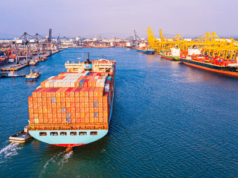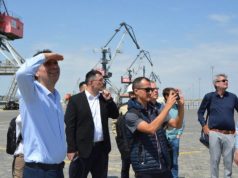Kazakhstan-to-Greece route aligns Beijing’s land and maritime strategies

The new route to Europe will extend to Piraeus, Greece, from Khorgos, pictured here, on the Chinese border with Kazakhstan. © Reuters
Most attention on China’s Belt and Road Initiative has so far centered on northern rail routes through Russia and Central Asia and investments in Mediterranean and Indian Ocean seaports. But policymakers in Beijing have long dreamt of an alternative that would more closely align China’s land and maritime trade strategies. They may have found it in the route from Piraeus, Greece, to Khorgos, on Kazakhstan’s border with China.
Of all the potential Belt and Road corridors between the European Union and China with a land component, Piraeus to Khorgos involves the smallest land element, passing through only three intermediate countries — Georgia, Azerbaijan and Kazakhstan. This is the smallest number for any proposed land bridge between the EU and China that also avoids Russia. But the route depends on cross-Caspian Sea ferry logistics and better rail links across the Caucuses.
Four competing land routes appear in the Chinese National Development and Reform Commission’s “China-Europe Corridor Construction and Development Plan,” published in 2016: Manchuria-Russia-Belarus; Mongolia-Russia-Belarus; Kazakhstan-Russia-Belarus; and Kyrgyzstan-Uzbekistan-Turkmenistan-Iran-Turkey.

The Russia-Belarus route crosses the fewest jurisdictions, but includes Russia and requires by far the longest distance by railway — two factors that conflict with a Chinese policy designed to subvert Russian and U.S. trade institutions.
The Mongolia-Russia-Belarus route is also long, and also involves Russia. The same is true of the Kazakhstan-Russia-Belarus route. The Kyrgyz route passes through five jurisdictions and requires two rail gauge changes: one from China to Kyrgyzstan, and another from Turkmenistan to Iran.
By contrast, the Piraeus to Khorgos route connects the Greek port of Athens, where China’s COSCO Shipping operates a container terminal, to the Georgian terminals of Batumi and Anaklia across the Black Sea, which is protected by international maritime law. For China, shifting containers across Georgia and Azerbaijan to the Caspian Sea may be worth the higher cost than a pure sea route, and would be much cheaper and quicker than the Belarus-Russia or Belarus-Russia-Mongolia routes.
In April, Kazakhstan, Azerbaijan and Georgia signed a three-way “Cross-sea Transport Channel Agreement,” to coordinate construction of the trans-Eurasian transport corridor. The route joins Khorgos to the Black Sea by upgrading the cross-Kazakhstan rail link to the Kazakh port of Aktau, on the Caspian, improving the ferry linking Aktau to Baku, in Azerbaijan, and linking Baku to Georgia’s new deep water port at Anaklia, on the Black Sea, through a cross-Caucasus rail corridor.
Using the Black and Caspian seas means that China’s Xinjiang region would be connected to Europe by a mostly maritime route, moving goods from the EU to China through a land crossing in the Caucasus that could become an inland equivalent of the Panama and Suez canals. Rail transport in the Caucasus and in Kazakhstan would be subsidized by the Chinese taxpayer, making the Caspian route the closest thing to an economically viable maritime route from Europe to western China.
Trade ambitions
Beijing’s industrial and trade ambitions in the Caucasus have been clear throughout the Belt and Road planning process. A trade agreement between China and Georgia was concluded in May — the first with any of China’s strategic transport corridor partners — and will come into force at the end of 2017 or in early 2018.
© Content from this site must be hyperlinked when used






